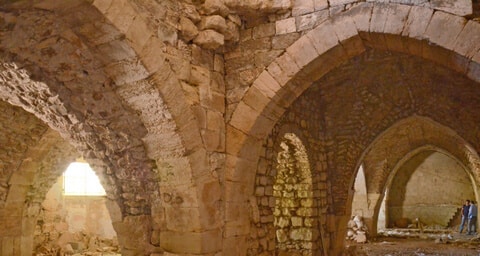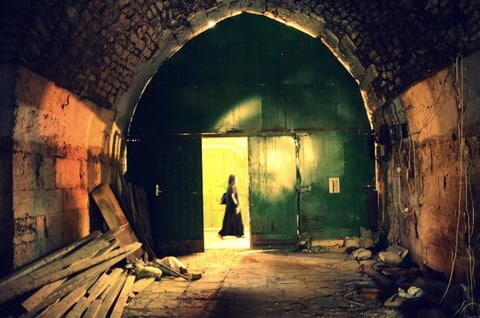In the impressive Crusader building, which looks reminiscent of the knights' halls in Acre, and is about 6 m high, an excavation was carried out by the Antiquities Authority before the establishment of a restaurant by the "Grand Bazaar" company

A part of a huge building from the Crusader period (1291-1099 CE), which was used as a busy hospital about 1000 years ago, has now been revealed to the public after excavations and research carried out by the Antiquities Authority at the site in collaboration with the "Grand Buzzer" company from East Jerusalem. The building - which is owned by the Muslim Waqf, is in the heart of the Christian quarter in the Old City of Jerusalem, an area known as Muristan (a corruption of the word hospital in Persian), near the main street of the Old City (David St.).
Until the early 2000s, the building was used as a busy and crowded fruit and vegetable market. Since then - he has stood his ground. Due to the intention of the "Grand Buzzer" company to qualify the building for a restaurant, the Antiquities Authority carried out archaeological tests on the site.
The building, of which only a small part is now exposed, covers, as far as is known, an area of 15 dunams. It is built with tremendous craftsmanship and polygonal vaults, and is over six meters high. The resulting appearance is of a huge hall, strewn with art in rooms and halls.
According to Rana Forstini and Amit Ram, the dig managers on behalf of the Antiquities Authority,
"The large hospital that operated there can be learned from historical documents from the period, mostly written in Latin. These show about the sophisticated hospital, which does not fall short in its organization and dimensions from a modern hospital. The hospital was founded and built by a Christian religious-military order called "St. John's Order of the Hospital in Jerusalem" and its Latin name is the Hospitallers (from the word hospital). El warriors took upon themselves the vow of caring for the pilgrims, and when necessary joined the warrior formation as an elite unit.
The Hospitallers' hospital had different wings and departments depending on the nature of the disease and the condition of the patient - similar to a modern hospital. In an emergency, the hospital could accommodate up to 2000 patients. The hospitalists treated male and female patients of different religions. There are reports that the Crusaders made sure to serve kosher food to the Jewish patients. Meanwhile, they were ignorant when it came to medicine and sanitation: an eyewitness testimony from the period states that a crusader doctor amputated the leg of a warrior only because he had a small festering wound - needless to say, the patient died. In establishing the hospital and learning the medical profession, the crusaders were helped by the Muslim Arab population. The profession of medicine occupied a place of honor in the Arab culture, and the name of the Arab doctors went far and wide.
In addition to the medical departments, the hospital also functioned as an orphanage, where babies who were abandoned after birth were collected, mothers who did not want their wombs left came with their heads covered and handed over the newborn. In most cases when twins were born, one of them was delivered to the hospital. The orphans were cared for with great dedication and in adulthood they served in the military order.
The dimensions of the hospital can be learned from documents from the period. One of the certificates says that a staff member who did not fulfill his function faithfully in the hospital, walked for long minutes along the building, and behind him walked in line with the rest of the staff, whipping their hands, and they whipped him. This spectacle was witnessed by all the patients.
After the fall of the Crusaders, the Ayyubid ruler Saladin lived nearby, and even renovated and maintained the hospital. He allowed ten Crusader monks to continue living in the building and serving the population of Jerusalem.

In the earthquake of 1457, the building collapsed and was buried under its ruins. Thus, the remains of the building stood until the Ottoman period. Parts of it were used as a stable in the Middle Ages, and in the excavations bones of horses and camels were found alongside a huge amount of metal blocks that were used in the craft of animal shoeing.
According to Monser Shwieki, the project manager, "the spectacular building will be integrated into the restaurant that will be built and in the restaurant island they will be able to get an impression of the magical Binami marine atmosphere that prevails in the place. According to him, "the place will be opened to the public this year".
